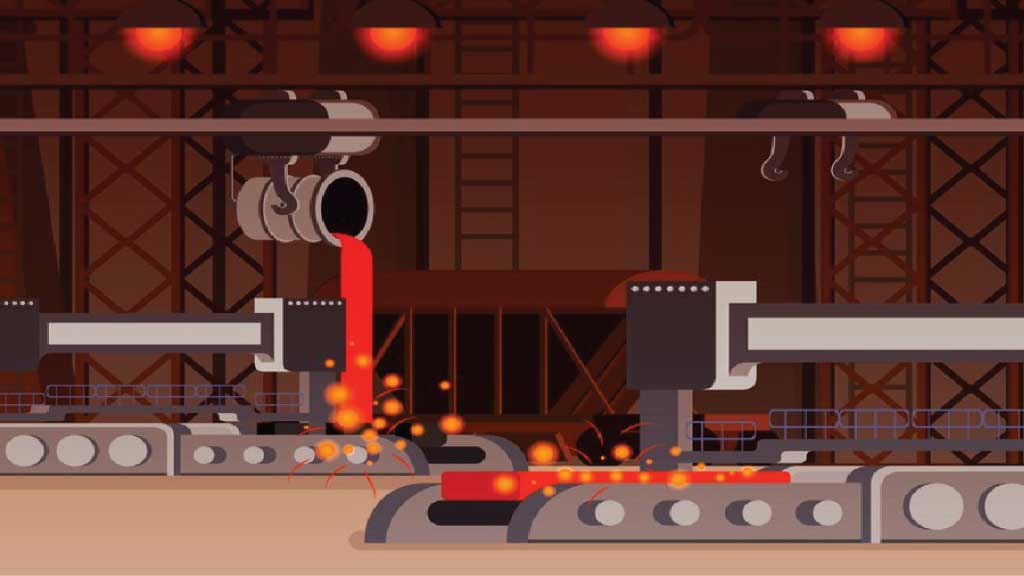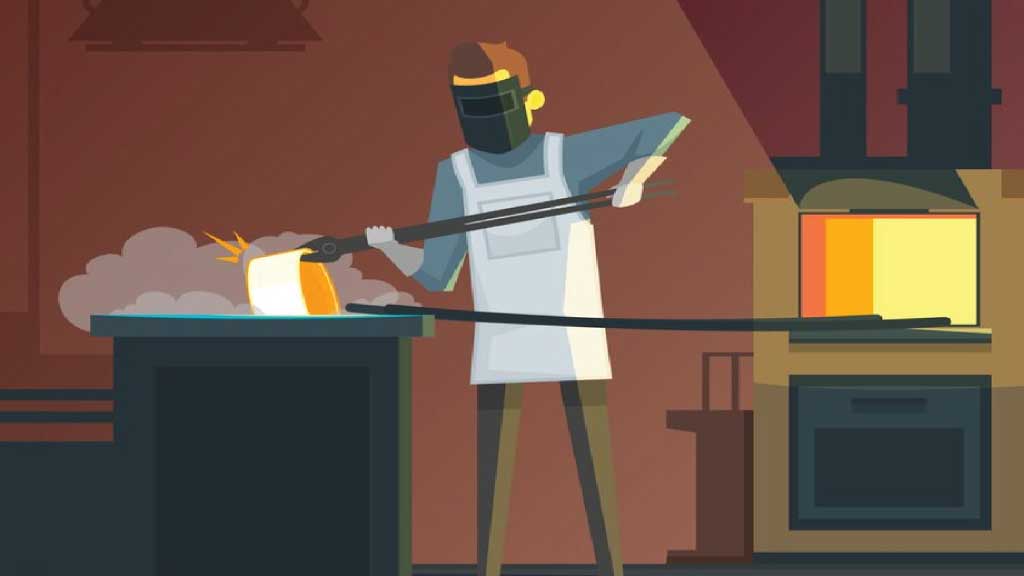Metal casting shrinkage refers to the reduction in size that occurs when molten metal solidifies and cools inside a mold during the casting process. This shrinkage happens due to the natural contraction of the metal as it transitions from a liquid to a solid state. Several factors influence the amount of shrinkage, including the type of metal being cast, the design of the mold, and the cooling rate.
The shrinkage rate varies depending on the specific metal being cast. Different metals have different thermal properties, which affect their shrinkage behavior. For example, some metals may experience greater shrinkage than others when cooling from the molten state to a solid form.
The design of the mold also plays a crucial role in controlling shrinkage. Mold designers must account for shrinkage by creating molds with dimensions slightly larger than the desired final dimensions of the casting. This compensates for the anticipated shrinkage during solidification, ensuring that the final casting meets the required size and specifications.
Furthermore, the cooling rate during solidification influences the extent of shrinkage. Faster cooling rates generally result in greater shrinkage because the metal solidifies more rapidly, leading to a higher degree of contraction.
To mitigate the effects of shrinkage and ensure accurate castings, manufacturers often employ various techniques such as designing complex molds with precise dimensions, using specific gating and riser systems to control cooling rates, and adjusting casting parameters based on the properties of the metal being cast. Additionally, post-casting processes like machining may be necessary to achieve the final desired dimensions and tolerances.
Metal Casting Shrinkage Allowance:
Metal casting shrinkage allowance refers to the intentional over sizing of the pattern or mold cavity used in the casting process to compensate for the expected shrinkage of the metal during solidification. This allowance ensures that the final casting will meet the desired dimensional specifications after cooling and contraction.
When designing a casting mold or pattern, engineers and manufacturers take into account the specific shrinkage characteristics of the metal being cast. Different metals have varying rates of shrinkage as they solidify and cool. By understanding these characteristics, designers can calculate the appropriate amount of shrinkage allowance needed to achieve the desired final dimensions of the casting.
The shrinkage allowance is typically added to the pattern or mold dimensions before casting. This means that the mold cavity is slightly larger than the final desired dimensions of the casting. The amount of allowance depends on factors such as the type of metal, the design of the casting, and the cooling conditions during solidification.
After casting and cooling, the excess material resulting from shrinkage is removed through machining or other finishing processes to achieve the final dimensions and surface quality required for the part. By incorporating shrinkage allowance into the casting design, manufacturers can ensure that the final product meets the necessary specifications and tolerances.
Stainless Steel Shrinkage Allowance:
The shrinkage allowance for stainless steel casting refers to the additional dimensions added to the casting mold or pattern to compensate for the anticipated shrinkage of stainless steel during solidification and cooling. Stainless steel, like other metals, experiences a reduction in size as it transitions from a liquid to a solid state due to thermal contraction.
The specific shrinkage allowance for stainless steel casting depends on various factors, including the alloy composition, casting process parameters, cooling rate, and the design of the casting mold. Engineers and manufacturers typically determine the appropriate shrinkage allowance through experimentation and analysis based on the specific characteristics of the stainless steel alloy being used.
The shrinkage allowance ensures that the final dimensions of the stainless steel casting meet the required specifications and tolerances after cooling and contraction. By incorporating the correct shrinkage allowance into the mold design, manufacturers can produce accurate and dimensionally precise stainless steel castings.
Cast Iron Shrinkage Allowance:
The shrinkage allowance for cast iron casting refers to the additional dimensions added to the casting mold or pattern to compensate for the expected shrinkage of cast iron during solidification and cooling. Cast iron, like other metals, contracts in volume as it changes from a liquid to a solid state due to thermal contraction.
The specific shrinkage allowance for cast iron casting depends on various factors, including the alloy composition, casting process parameters, cooling rate, and the design of the casting mold. Engineers and manufacturers typically determine the appropriate shrinkage allowance through experimentation and analysis based on the specific characteristics of the cast iron alloy being used.
The shrinkage allowance ensures that the final dimensions of the cast iron casting meet the required specifications and tolerances after cooling and contraction. By incorporating the correct shrinkage allowance into the mold design, manufacturers can produce accurate and dimensionally precise cast iron castings.
Brass Shrinkage Allowance:
Casting Shrinkage Percentage:
FAQs About Metal Casting Shrinkage:
What factors contribute to metal casting shrinkage?
Shrinkage in metal casting is influenced by various factors such as the solidification process, thermal contraction of the metal, density changes during phase transition, cooling rates, alloy composition, mold design, and pattern dimensions. These factors collectively determine the extent of shrinkage experienced by the casting during solidification and cooling.
How does mold design affect metal casting shrinkage?
Mold design plays a crucial role in controlling metal casting shrinkage. Designers must consider factors such as the size and shape of the mold cavity, gating and riser systems, and allowances for shrinkage. Proper mold design ensures that the casting has enough space to accommodate shrinkage without affecting its final dimensions and quality.
Why is it necessary to use shrinkage allowances in metal casting?
Shrinkage allowances are essential in metal casting to compensate for the expected reduction in size during solidification and cooling. By intentionally oversizing the pattern or mold cavity, shrinkage allowances ensure that the final casting meets the desired dimensions and tolerances after shrinkage has occurred. This helps prevent dimensional inaccuracies and ensures the quality of the cast component.
How can cooling rates be optimized to minimize metal casting shrinkage?
Optimizing cooling rates is vital for minimizing metal casting shrinkage. Controlling the rate at which the metal solidifies helps regulate the degree of contraction during cooling. Slower cooling rates allow for more gradual solidification, reducing the likelihood of shrinkage related defects. Techniques such as adjusting mold materials, incorporating cooling channels, and optimizing pouring temperatures can help achieve optimal cooling rates.
What role does material selection play in managing metal casting shrinkage?
Material selection is critical for managing metal casting shrinkage effectively. Different alloys exhibit varying shrinkage behaviors during solidification and cooling. By selecting alloys with suitable shrinkage characteristics and thermal properties, manufacturers can minimize shrinkage related issues and achieve accurate dimensions in the final casting. Additionally, considering factors such as fluidity and alloy composition further optimizes the casting process and reduces shrinkage defects.
All Images ‘Designed by Freepik‘



While working on a small aluminum project last year, I faced unexpected casting shrinkage and couldn’t figure out why. Reading this post finally made everything clear. The explanations are spot-on and relatable—excellent article for anyone exploring metal casting fundamentals.